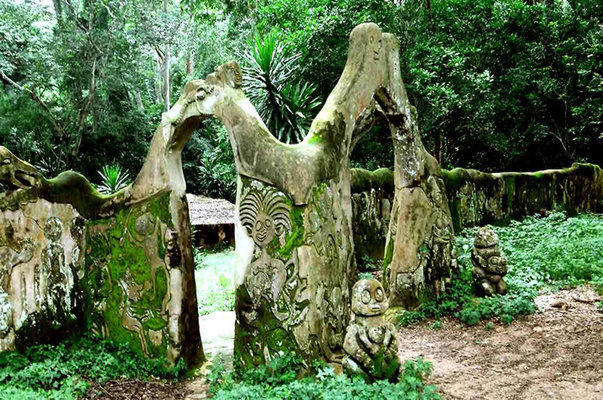Title: Nigeria’s UNESCO World Heritage Sites: Pillars of Culture, History, and Identity
Nigeria, often described as the “Giant of Africa,” is not only rich in natural resources and vibrant cultures, but also home to some of the continent’s most significant historical and cultural treasures. Among these are its UNESCO World Heritage Sites designated landmarks that bear exceptional cultural or natural significance to humanity. These sites are not merely relics of the past; they are living testaments to Nigeria’s diverse civilizations, resilient traditions, and the ongoing dialogue between history and modern identity.
Currently, Nigeria boasts two UNESCO World Heritage Sites:
1. Sukur Cultural Landscape (Adamawa State)
Nestled in the Mandara Mountains of northeastern Nigeria, the Sukur Cultural Landscape was inscribed as a UNESCO World Heritage Site in 1999. What makes Sukur extraordinary is its unbroken continuity of cultural traditions, social structures, and land use practices over the centuries.
The landscape is defined by its terraced fields, sacred spaces, and the imposing palace of the Hidi (chief), built with dry stone architecture and adorned with symbols of authority. Sukur reflects a complex socio-political system that predates colonial influence, with its traditions of iron smelting and agriculture providing a unique window into pre-colonial African civilization.
Why It Matters:
Sukur stands as a monument to indigenous governance, environmental harmony, and community resilience. In an age where globalization threatens the erosion of local customs, Sukur reminds us of the enduring strength of traditional African knowledge systems.
2. Osun-Osogbo Sacred Grove (Osun State)
The Osun-Oshogbo Sacred Grove, inscribed in 2005, is a dense forest sanctuary located on the outskirts of Oshogbo, in southwestern Nigeria. It is one of the last remaining sacred groves in Yorubaland once common but now vanishing due to urbanization and religious shifts.
Dedicated to Osun, the Yoruba goddess of fertility and one of the revered Orishas, the grove is a spiritual heartland for Yoruba cosmology. It houses over 40 shrines, sculptures, and sanctuaries, many of which were restored or created in the mid 20th century by Austrian Nigerian artist Susanne Wenger and her New Sacred Art movement.
Why It Matters:
The Osun Oshogbo Grove is a living heritage site not frozen in time but actively celebrated through annual festivals, rituals, and art. It is a fusion of spirituality, ecological preservation, and cultural pride. At a time when deforestation and spiritual homogenization threaten traditional belief systems, the grove stands as a sanctuary both literal and symbolic for Yoruba identity and environmental consciousness.
The Broader Significance
These World Heritage Sites are more than tourist attractions; they are vessels of collective memory, embodying stories that cannot be told through textbooks alone. They serve multiple vital functions:
- Cultural Identity: They affirm the richness of Nigerian heritage and provide younger generations with tangible links to their roots.
- Tourism and Economy: Properly managed, they attract both domestic and international visitors, generating revenue and employment.
- Education and Research: They offer opportunities for academic study, archaeological exploration, and historical preservation.
- Global Recognition: Inclusion on the UNESCO list places Nigeria firmly within the global narrative of shared human heritage, asserting Africa’s rightful place in world history.
Looking Ahead: Sites on the Tentative List
Nigeria has several more sites on its UNESCO Tentative List, such as the Oke-Idanre Hill, Benin Iya and City Walls, and the Ancient Kano City Walls. These sites, once inscribed, would further enrich the country’s representation on the global cultural stage. Protecting and promoting these places is not just the responsibility of the government but a collective call to all Nigerians.
Conclusion
UNESCO World Heritage Sites in Nigeria are not mere remnants of the past; they are beacons guiding the present and future. They challenge us to look beyond modern constructs and reconnect with the profound wisdom embedded in Nigeria’s landscapes, traditions, and spiritual systems. In preserving them, Nigeria preserves the soul of its people and shares that soul with the world.






